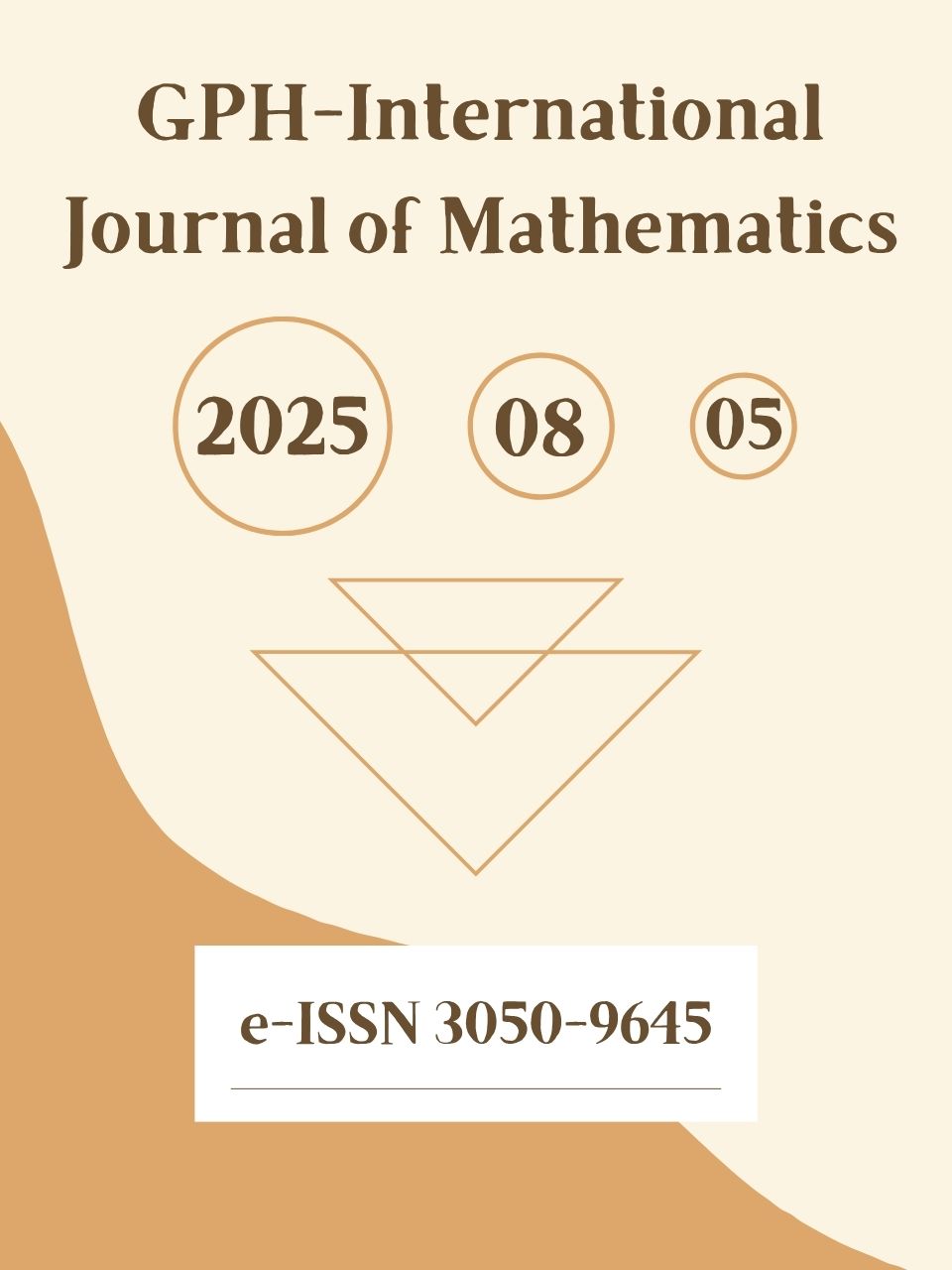Fractional mathematical model for the dynamics of pneumonia transmission with control using fixed point theory
Abstract
This study looks at key epidemiological details of pneumonia by using a mathematical model that includes fixed point theory and fractional-order calculations to see how treatment and vaccination affect transmission. Using fixed point theory for numerical simulations, it is easy to show the relationship between pneumonia dynamics and the different values and parameters in fractional-order models. Through more analyses, it has been shown that both rising contact and weaker treatment would result in an increase in pneumonia cases. Also, the study shows that increasing the numbers of vaccinated and treated individuals can fight and reduce the occurrence of the disease among humans.
Downloads
References
[2] Baleanu D, Hasanabadi M, Vaziri AM, Jajarmi A. A new intervention strategy for an HIV/AIDS transmission by a general fractional modeling and an optimal control approach. Chaos Solitons Fractals. 2023;167:113078.
[3] Baleanu D, Jajarmi A, Mohammadi H, Rezapour S. A new study on the mathematical modeling of human liver with Caputo–Fabrizio fractional derivative. Chaos Solitons Fractals. 2020;134:109705.
[4] Baleanu D, Mohammadi H, Rezapour S. A fractional differential equation model for the COVID-19 transmission by using the Caputo–Fabrizio derivative. Adv Differ Equ. 2020;2020(1):1–27.
[5] Nazir G, Shah K, Debbouche A, Khan RA. Study of HIV mathematical model under nonsingular kernel type derivative of fractional order. Chaos Solitons Fractals. 2020;139:110095
[3] M. Martcheva, “Texts in applied mathematics,” in An Introduction to Mathematical Epidemiology, vol. 61, Springer, 2015.
[4] S. M. A. Rahman, Study of Infectious Diseases by Mathematical Models: Predictions and Controls, University of Western Ontario, 2016.
[5] G. T. Tilahun, “Modeling co-dynamics of pneumonia and meningitis diseases,” Advances in Difference Equations, vol. 2019, no. 1, Article ID 2087, 2019.
[6] S. J. Aston, “Pneumonia in the developing world: Characteristic features and approach to management,” Respirology, vol. 22, no. 7, pp. 1276–1287, 2017.
[7] M. Kizito and J. Tumwiine, “A mathematical model of treatment and vaccination interventions of pneumococcal pneumonia infection dynamics,” Journal of Applied Mathematics, vol. 2018, Article ID 2539465, 16 pages, 2018.
[8] S. J. Aston, “Pneumonia in the developing world: Characteristic features and approach to management,” Respirology, vol. 22, no. 7, pp. 1276–1287, 2017.
[9] F. K. Mbabazi, J. Y. T. Mugisha, and M. Kimathi, “Global stability of pneumococcal pneumonia with awareness and saturated treatment,” Journal of Applied Mathematics, vol. 2020, Article ID 3243957, 12 pages, 2020.
[10] C. Feldman, R. Anderson, and T. Rossouw, “HIV-related pneumococcal disease prevention in adults,” Expert Review of Respiratory Medicine, vol. 11, no. 3, pp. 181–199, 2017.
[11] F. K. Mbabazi, J. Y. T. Mugisha, and M. Kimathi, “Global stability of pneumococcal pneumonia with awareness and saturated treatment,” Journal of Applied Mathematics, vol. 2020, Article ID 3243957, 12 pages, 2020.
[12] G. T. Tilahun, O. D. Makinde, and D. Malonza, “Modelling and optimal control of pneumonia disease with cost-effective strategies,” Journal of Biological Dynamics, vol. 11, article 1337245, supplement 2, pp. 400–426, 2017.
[13] E. J. Ndelwa, M. Kgosimore, E. S. Massawe, and L. Namkinga, “Mathematical modelling and analysis of treatment and screening of pneumonia,” Mathematical Theory and Modelling, vol. 5, no. 10, 2015
[14] J. K. Nthiiri, G. O. Lawi, and A. Manyonge, “Mathematical model of pneumonia and HIV/AIDS co-infection in the presence of protection,” International Journal of Mathematical Analysis, vol. 9, pp. 2069–2085, 2015.
[15] K. Doura, D. Malendez-Morales, G. Mayer, and L.E Perez. An s-i-s model of streptococcal disease with a class of beta hemolytic carriers. 2000.
[16] World Health Organization. Global health observatory data repository, 2010.
[17] R. Thadani. Pneumonia recovery time, 2011.
[18] J. Lutera, D. Mbete, and S. Wangila, “Co-infection model of HIV/AIDS-pneumonia on the effect of treatment at initial and final stages,” IOSR Journal of Mathematics(IOSR-JM), vol. 14, no. 5, pp. 56–81, 2018.
[19] Amos J., Omale D., Atokolo W., Abah E., Omede B.I., Acheneje G.O., Bolaji B. (2024), Fractional mathematical model for the Transmission Dynamics and control of Hepatitis C,FUDMA Journal of Sciences,Vol.8,No.5,pp.451-463, DOI: https://doi.org/10.33003/fjs-2024-0805-2883.
[20] Philip J., Omale D., Atokolo W., Amos J., Acheneje G.O., Bolaji B. (2024), Fractional mathematical model for the Transmission Dynamics and control of HIV/AIDs,FUDMA Journal of Sciences,Vol.8,No.6,pp.451-463, DOI: https://doi.org/10.33003/fjs-2024-0805-2883.
[21] Abah E., Bolaji B., Atokolo W., Amos J., Acheneje G.O., Omede B.I, Amos J.,Omeje D. (2024), Fractional mathematical model for the Transmission Dynamics and control of Diphtheria ,International Journal of mathematical Analysis and Modelling,Vol.7,ISSN:2682-5694.
[22] Atokolo W a, RemigiusAja .O. ,Omale .D., Ahman .Q. O.,Acheneje G. O., Amos . J. (2024) Fractional mathematical model for the transmission dynamics and control of Lassa fever Journal of journal homepage: www.elsevier. 2773-1863/© 2024com/locate/fraopehttps:// doi.org/10.1016/j.fraope.2024.100110.
[23] Syafruddin S, Noorani MSM. SEIR model for transmission of dengue fever in Selangor Malaysia. Int J Modern Phys Confer Ser. 2012;9: 380–9.
[24] Derouich M, Boutayeb A, Twizell EH. A model of dengue fever. Biomed Eng Online. 2003;2(1):1–10.
The authors and co-authors warrant that the article is their original work, does not infringe any copyright, and has not been published elsewhere. By submitting the article to GPH - International Journal of Mathematics, the authors agree that the journal has the right to retract or remove the article in case of proven ethical misconduct.



























